Optical modules are the backbone of high-speed networking and data transmission, playing a critical role in enabling seamless connectivity across modern data centers. With the growing demand for higher bandwidth and more efficient systems, choosing the right optical module has become a vital decision for network engineers and IT professionals.
This blog aims to provide a clear understanding of the differences between QSFP-DD (Quad Small Form-factor Pluggable Double Density) and QSFP28, two widely-used optical module standards. We examine the specifications, performance capabilities, and use cases of these optical modules. Through this, we aim to equip readers with the knowledge needed to make informed networking decisions.
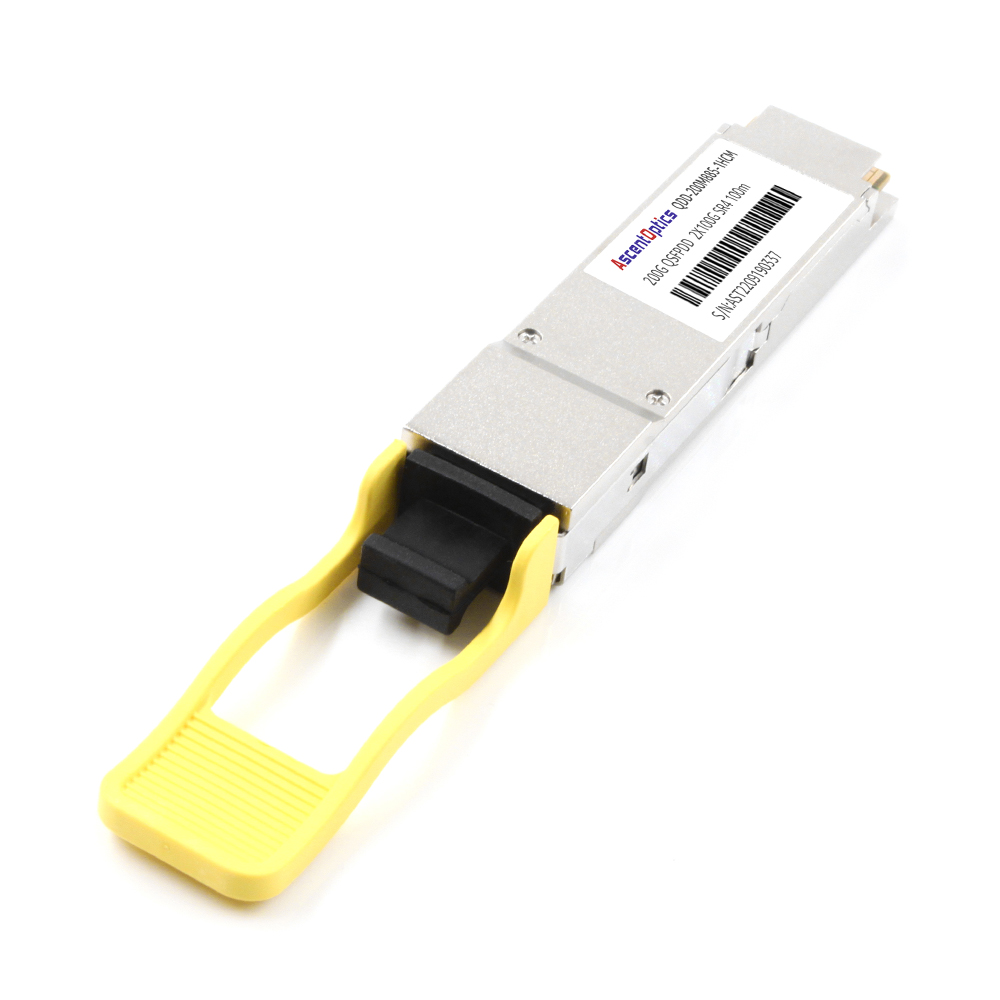
QSFP-DD, or Quad Small Form-factor Pluggable Double Density, is an advanced optical module standard designed to support data rates of up to 400Gbps. It achieves this through 8 lanes, each capable of handling 50Gbps, making it ideal for high-bandwidth applications in data centers and cloud computing environments.
On the other hand, QSFP28 is a predecessor supporting data rates of up to 100Gbps. It utilizes 4 lanes, each with a 25Gbps capacity, making it suitable for lower bandwidth requirements compared to QSFP-DD.
The primary distinction lies in their density and scalability. QSFP-DD offers higher bandwidth and backward compatibility with QSFP28 ports. In contrast, QSFP28 remains a cost-effective solution for networks with lower throughput requirements.
QSFP-DD, or Quad Small Form Factor Pluggable Double Density, is an advanced interconnect solution designed to meet growing bandwidth demands. It features a form factor with eight electrical lanes, supporting aggregate data rates of up to 400Gbps. The form factor is aligned with the IEEE and MSA standards to ensure interoperability across vendors.
Physical Specifications:
Size: QSFP-DD maintains the same dimensions as QSFP28, allowing for seamless backward compatibility, with an additional row of electrical contacts to support the double-density interface.
Connector type: 8-lane electrical interface, compatible with PCIe Gen4 signaling.
Thermal performance: Designed to handle an operating power of up to 12W, depending on specific implementations.
Key Data Rates:
Per lane speed: Up to 50Gbps with PAM4 (Pulse Amplitude Modulation) signaling.
Aggregate throughput: Up to 400Gbps using all 8 lanes.
Applications:
The QSFP-DD module is ideal for high-performance applications like data center spine-leaf architectures, high-speed network switches, and edge computing platforms that demand ultra-high bandwidth and scalability. It is also power-optimized to reduce total cost of ownership in large-scale environments, ensuring performance efficiency even under high workloads.
The QSFP28 (Quad Small Form-Factor Pluggable 28) transceiver supports a data rate of 100Gbps, divided across four 25Gbps channels. Designed for high-speed data communications, it is commonly used in 100G Ethernet, data center interconnects, and cloud computing environments. Leveraging advanced technologies such as PAM4 (Pulse Amplitude Modulation), some QSFP28 modules have now been enhanced to support even higher data rates, including up to 200Gbps in certain configurations. These advancements help QSFP28 remain a key component in scalable and future-proof network infrastructures. It strikes a balance between performance, energy efficiency, and cost for modern IT ecosystems.
QSFP-DD (Quad Small Form-factor Pluggable Double Density) and QSFP28 modules differ significantly in terms of power consumption due to their design and performance capabilities. QSFP28 modules typically consume between 3.5W to 5W, depending on the data rate and operational conditions, making them highly efficient for 100Gbps network applications. On the other hand, QSFP-DD modules, which are designed to support higher speeds of up to 400Gbps, generally require between 7W to 12W per module due to their increased functionality and higher processing demands.
These differences in power consumption highlight the trade-off between performance and energy efficiency. QSFP28 modules are optimal for environments prioritizing lower power usage, while QSFP-DD modules are better suited for high-performance infrastructures where bandwidth demands outweigh energy considerations. These metrics are essential for planning scalable, energy-efficient networks tailored to specific operational needs.
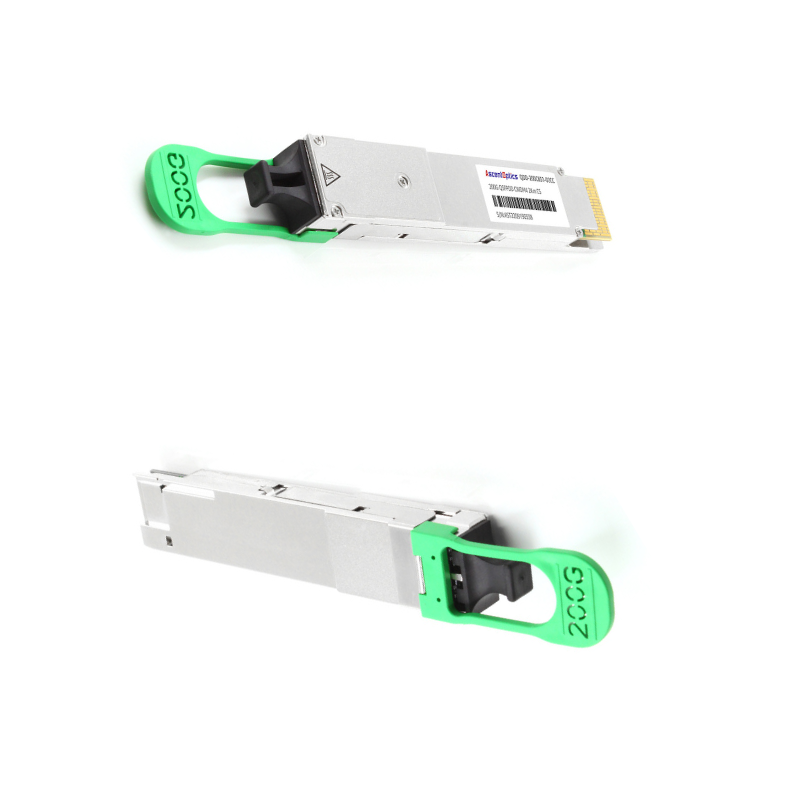
Below is a detailed comparison of the technical specifications of QSFP-DD and QSFP28 modules, highlighting their contributions to high-speed data transmission:
(1)Bandwidth Capacity:
QSFP28: Supports up to 100 Gbps per module, achieved via 4 lanes of 25 Gbps each.
QSFP-DD: Delivers up to 400 Gbps per module, using 8 lanes of 50 Gbps each.
(2)Form Factor:
QSFP28: Compact design optimized for power efficiency while supporting high-speed connectivity.
QSFP-DD: Slightly larger than QSFP28 to accommodate higher lane counts, maintaining backward compatibility with QSFP28 ports.
(3)Power Consumption:
QSFP28: Consumes between 3.5 to 5 watts per module, designed for energy-conscious applications.
QSFP-DD: Consumes 7 to 12 watts per module, reflecting its higher data rate capabilities.
(4)Backward Compatibility:
QSFP28: Not compatible with QSFP-DD as it lacks the necessary lane count.
QSFP-DD: Fully backward compatible with QSFP28 modules for flexible deployment in hybrid environments.
(5)Applications:
QSFP28: Ideal for data centers with moderate bandwidth demands and stringent energy efficiency targets.
QSFP-DD: Suited for next-generation networking environments with significant throughput requirements, such as 5G networks and AI-driven infrastructures.
These specifications underline how QSFP-DD modules leverage advanced technology to meet growing data traffic demands compared to QSFP28, which prioritizes energy-efficient performance for existing frameworks.
Optical transceivers play a critical role in ensuring efficient and scalable data transmission within modern data centers. With the increase in cloud computing, IoT, and AI workloads, the demand for higher bandwidth and lower latency has grown exponentially. Optical transceivers, such as QSFP28 and QSFP-DD, facilitate high-speed data connections between servers, switches, and storage systems, enabling data centers to meet these demands effectively. Recent advancements in optical transceiver technology focus on achieving speeds of 400G and beyond, leveraging Dense Wavelength Division Multiplexing (DWDM) and Coherent Optics to optimize data transfer while reducing power consumption and operational costs. These innovations are essential for addressing the challenges posed by escalating data traffic and evolving network requirements.
Compatibility and interoperability are critical for ensuring seamless communication between network components. Compatibility refers to the ability of hardware or software to work with other systems without any modification. Interoperability, on the other hand, is the ability of different systems or devices to exchange and use information effectively. Ensuring both aspects requires adherence to industry standards, such as IEEE or ITU-T, which define the parameters for interface design and communication protocols. This guarantees efficient integration and operational consistency across diverse platforms.
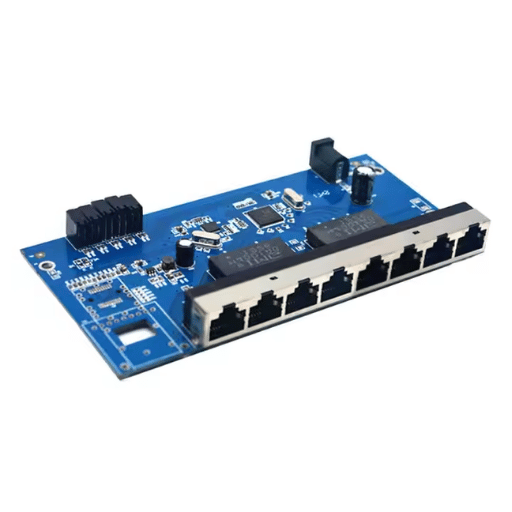
QSFP-DD (Quad Small Form-factor Pluggable Double Density) technology delivers numerous advantages in data center environments, particularly in addressing the increasing demand for higher bandwidth and improved efficiency. Below is a detailed list highlighting the key benefits of adopting QSFP-DD:
(1)Higher Bandwidth Capacity
QSFP-DD modules support up to 400Gbps data transmission rates, enabling data centers to handle growing demands for high-speed connections and scalable network performance.
(2)Backward Compatibility
The design of QSFP-DD allows compatibility with existing QSFP-based infrastructure, providing a seamless upgrade path while protecting previous investments in networking hardware.
(3)Compact Form Factor
Despite the increased density, QSFP-DD retains a relatively small footprint, allowing for better utilization of rack space in data centers and enhanced equipment scalability.
(4)Energy Efficiency
QSFP-DD modules are optimized for lower power consumption while maintaining high-performance levels, reducing operational costs in energy expenditure over time.
(5)Support for Next-Generation Applications
This technology is ideal for applications such as cloud computing, artificial intelligence (AI), and high-performance computing (HPC), where bandwidth, latency, and efficiency are critical.
(6)Scalability and Flexibility
QSFP-DD provides a versatile solution for scaling networks without requiring significant system overhauls, allowing data centers to adapt to evolving workload demands.
(7)Adherence to Industry Standards
QSFP-DD technology complies with MSA (Multi-Source Agreement) standards, ensuring reliable and interoperable solutions are available from multiple vendors.
The adoption of QSFP-DD technology offers significant advantages for modern data centers, ensuring they remain equipped to handle the challenges of a data-driven future.
QSFP-DD modules are designed to optimize power consumption while maintaining high data throughput. The use of advanced materials and thermal management systems helps reduce heat generation, ensuring efficient operation. This minimizes cooling requirements in data centers, contributing to overall energy savings and improved system reliability.
QSFP-DD (Quad Small Form Factor Pluggable Double Density) modules are engineered to meet the demanding requirements of high-speed data networks. Below are the detailed key features and specifications:
These specifications illustrate the versatility and advanced capabilities of QSFP-DD modules, solidifying their role as critical components in next-generation data center infrastructure.
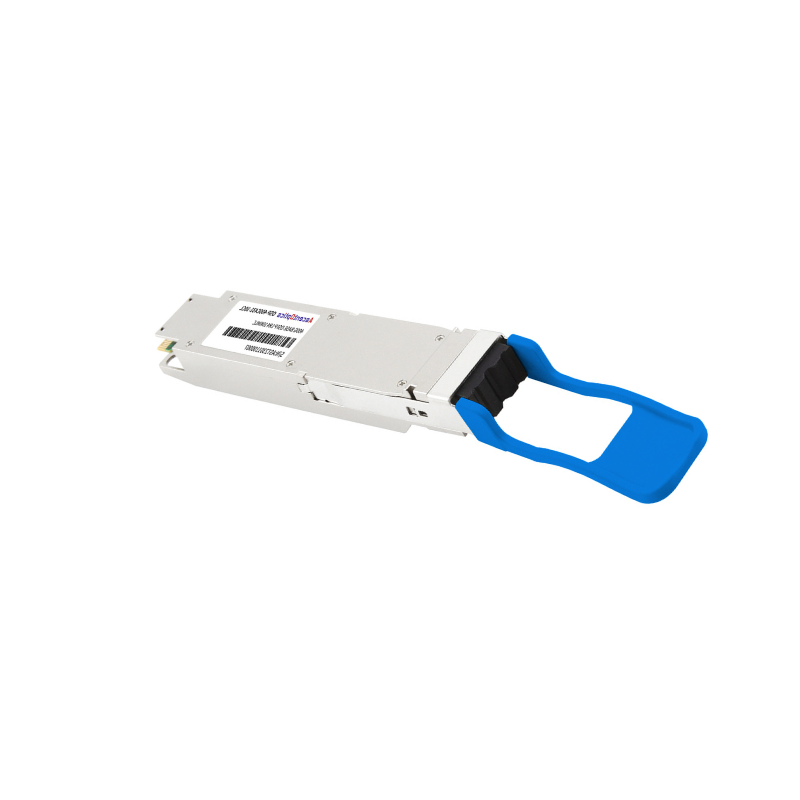
QSFP-DD and OSFP differ primarily in their form factors, power consumption, and use cases. QSFP-DD is smaller in size, allowing higher port density, making it ideal for space-constrained environments. OSFP, being slightly larger, supports higher power levels per module, which makes it suitable for use cases requiring enhanced thermal management and higher power optics.
Both standards support 400G speeds, but QSFP-DD is widely adopted in existing infrastructure due to backward compatibility with previous QSFP generations, offering more flexibility during deployment.
Form factor compatibility plays a crucial role in the adoption of network modules like QSFP-DD and OSFP. QSFP-DD is designed with backward compatibility in mind, supporting legacy QSFP transceivers such as QSFP+, QSFP28, and QSFP56. This ensures seamless integration into existing hardware without major overhauls, offering significant cost and operational efficiencies.
On the other hand, OSFP, while not natively backward compatible, delivers superior thermal performance and supports higher power optics for evolving network demands. Organizations should evaluate compatibility concerns alongside thermal and performance requirements to determine the most suitable choice for their infrastructure.
Port density and data rates are critical factors to consider when evaluating network modules for scalable and high-performance deployments. QSFP-DD supports up to 36 ports per 1U switch, providing a potential aggregated bandwidth of 14.4 Tbps with 400 Gbps per port. This high port density makes QSFP-DD an attractive option for environments requiring maximum bandwidth in limited space.
Conversely, OSFP also offers strong performance by supporting 32 ports per 1U switch, delivering an aggregated bandwidth of 12.8 Tbps at 400 Gbps per port. While it has slightly lower port density compared to QSFP-DD, OSFP’s design accommodates higher-power optics, making it future-proof for applications requiring subsequent power scaling.
Both modules are envisioned for 800 Gbps capabilities in the future, with early testing and prototypes demonstrating promising results. Their suitability ultimately hinges on the specific architectural demands of the network, such as power, cooling, and space constraints.
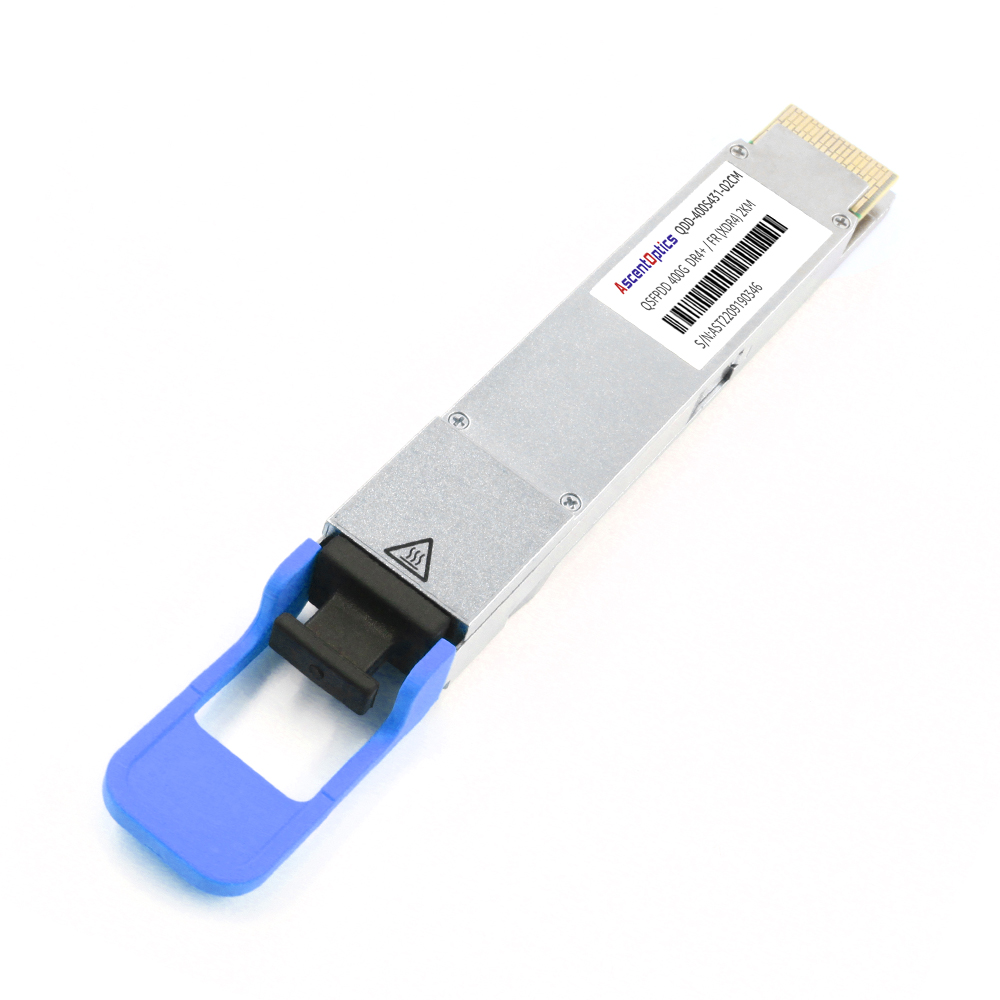
The 400G QSFP-DD transceiver introduces a set of advanced features and specifications that make it a reliable and scalable solution for next-generation networking requirements. QSFP-DD plays a key role in the evolution of 400G Ethernet, primarily in the following aspects:
Form Factor Advantage: QSFP-DD achieves an aggregate bandwidth of 400Gbps by using an 8-lane electrical interface, with each lane supporting 50G PAM4. At the same time, it maintains a form factor similar to QSFP28. This results in four times the port density compared to 100G QSFP28 modules—for example, a 1U switch can support up to 32×400G ports.
Backward Compatibility: QSFP-DD supports insertion of existing QSFP28/QSFP+ modules, enabling smooth network upgrades. For instance, a 400G switch can accommodate 100G modules, helping to reduce deployment costs and protect prior investments.
Multi-Standard Compliance: QSFP-DD complies with key industry standards, including IEEE 802.3bs (400GBASE), the QSFP-DD MSA, and CMIS 4.0 management interface, ensuring interoperability across vendors and equipment.
Mainstream Form Factor Choice: Compared to alternatives like CFP8 (which is bulky and power-hungry) and OSFP (which offers better thermal performance but lacks backward compatibility). QSFP-DD stands out as the mainstream solution for 400G deployments in data centers due to its high density and compatibility.
Short-Reach: Modules like 400G SR8 (multimode fiber, up to 100 meters) and DR4 (single-mode fiber, up to 500 meters) are ideal for intra-data center connections.
Medium to Long-Reach: Options such as FR4 (single-mode, 2 km) and LR4/LR8 (single-mode, 10 km) meet the needs of data center interconnects (DCI) and metro networks.
Flexible Connectivity: QSFP-DD supports both direct 400G links and breakout configurations (e.g., 1×400G split into 4×100G), enabling seamless adaptation to a wide range of network architectures.
PAM4 Modulation and DSP: QSFP-DD leverages 8×50G PAM4 modulation combined with advanced Digital Signal Processing (DSP) to increase per-lane data rates. Integrated Forward Error Correction (FEC) further enhances signal integrity over longer distances.
Low Power Design: With power consumption under 12W for modules like FR4, QSFP-DD is significantly more efficient than earlier form factors such as CFP8 (up to 18W), making it ideal for high-density data center deployments.
Transition to 800G: The QSFP-DD architecture is scalable to support 800G transmission—such as with 800G-SR8 modules—by utilizing 16×50G PAM4 or 8×100G PAM4 channels. This allows for a seamless evolution to higher bandwidth while maintaining continuity in technology and form factor.
QSFP-DD features high-density design, backward compatibility, and strong standardization support. It has become a key solution for 400G Ethernet deployment. By balancing performance, cost, and upgrade flexibility, it provides a solid foundation for data centers to smoothly evolve toward 400G and 800G networks.
The development of optical modules is primarily driven by the demand for higher bandwidth, lower latency, and greater energy efficiency in network infrastructures. Key advancements include the adoption of silicon photonics, which integrates optical and electronic components for improved performance, and the utilization of digital signal processing (DSP) for enhanced error correction.
The industry is shifting toward co-packaged optics. This means placing optical components next to networking chips. The goal is to reduce power use and save space in high-performance systems. These trends underline the industry’s commitment to meeting scalability and sustainability goals.
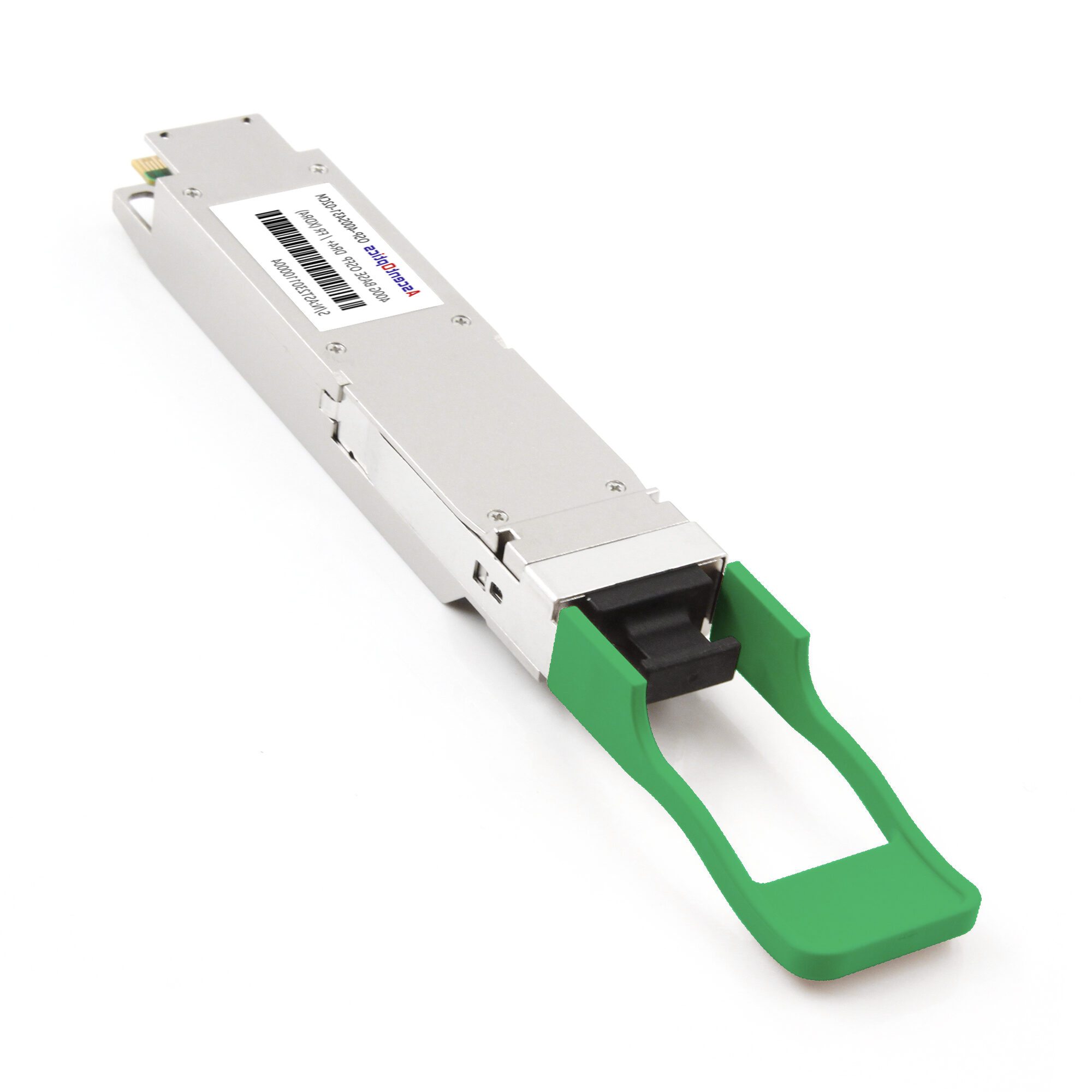
A: Both QSFP-DD and OSFP transceivers facilitate the same use case of 400 Ether but the difference lies within their sizes. QSFP-DD uses a smaller form factor and is designed to be backward compatible with existing QSFP ports, allowing for easier upgrades. In contrast, OSFP adopts a larger form factor. This increases space requirements but offers better thermal performance and allows for higher power handling. The decision on applying either QSFP-DD or OSFP depends on the requirements set in place by the network as well as the infrastructure availability.
A: Due to its backward compatibility features with the QSFP28, the QSFP-DD can allow the use of QSFP28 transceivers in this port. This option allows network operators to use their already existing QSFP28 modules while planning to put systems in place that can facilitate an upgrade to the QSFP-DD which supports higher data rates.
A: The Most significant role of the QSFP28 form factor in a data center is that it facilitates 100G Ethernet and even higher speed which allows for wider adoption of the technology in comparison to other technologies available in the market. These features in addition to the small form factor and power consumption are suited for the dense networks environments as they allow for greater port density on network switches and routers.
A: The efficiency of the networks is enhanced by the use of the transceiver, the provision of 400G Ethernet and automation of the data center is made possible by the increased data rate QSFP-DD compatibility achieves maximum port density. All of these attributes render transceivers QSFP-DD ideal for the contemporary data centers to scale up network performance and capacity.
A: QSFP-DD was able to add more electrical contacts which were able to electrically signal eight lanes rather than four opposing sides like seen in the QSFP28. There is more lane capacity for QSFP-DD which means it is able to facilitate 200G and 400G ethernet systems.
A: The differences between QSPF-DD vs OSFP in deployment wise is usually in the case of form factors and compatibility. In comparison to OSFP, a bigger size that requires new infrastructure is needed, while the integration of OSFP along with other ports into existing networks is made easier by its backwards compatibility.
A: Of course, ASMBL QSFP-DD was developed in line with the standards for the QSFP56 so both of these switch are part of the same family of transceivers. The backward compatibility of the QSFP-DD allows the use of QSFP56 transceivers which are used for 200G Ethernet applications thus enabling easy migration within the network.